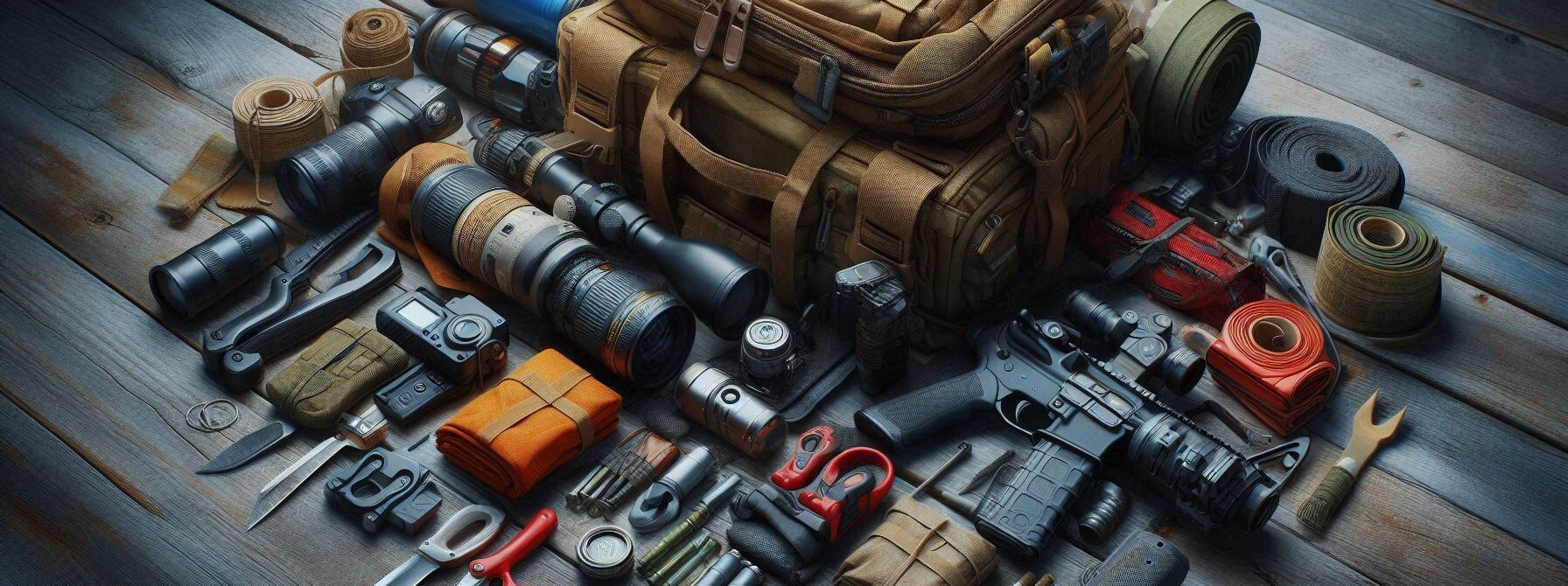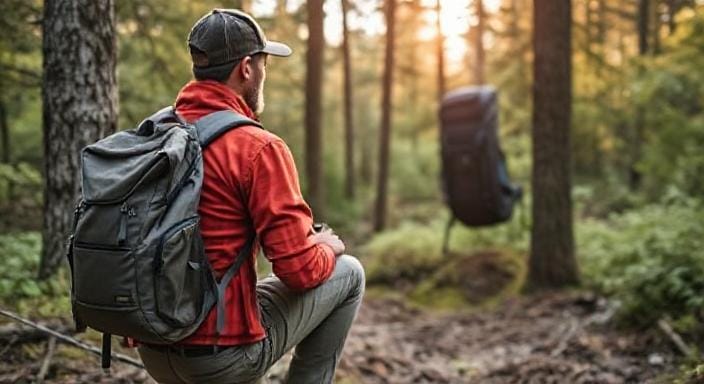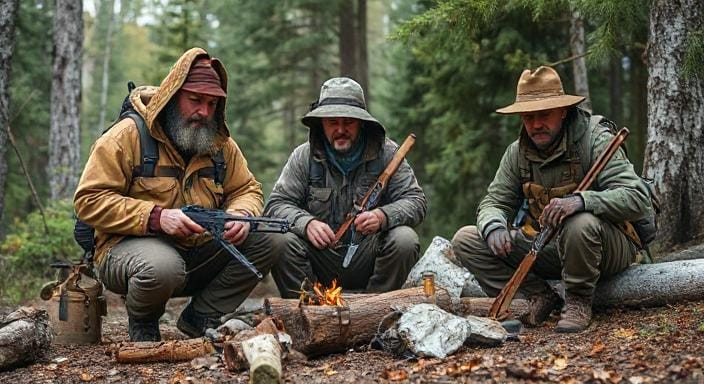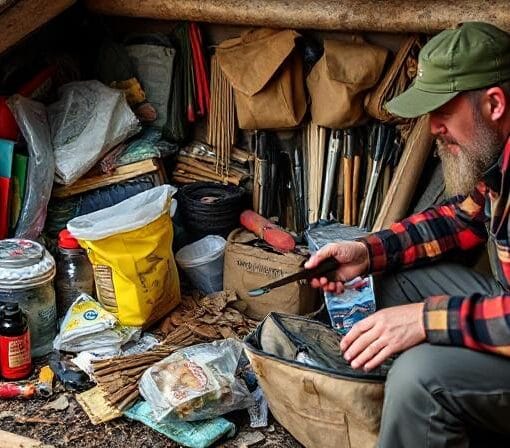Top Takeaways and Key Concepts
- Choose a durable, comfortable backpack with waterproof material and multiple compartments.
- Pack essential survival items like food, clean water, and a first aid kit for 72 hours.
- Include versatile survival tools such as a multi-tool, flashlight, paracord, and fire starters.
- Pack layered clothing and extras to handle changing weather and prevent injuries like blisters.
- Maintain and update your bug-out bag by checking supplies and rotating items seasonally.
Summary of This Article
Please Note: This post may contain affiliate links. If you click one of them, we may receive a commission at no extra cost to you. As an Amazon Associate, I earn from qualifying purchases.
This article explains how to build a practical and reliable bug-out bag that can support survival for at least 72 hours during emergencies. It starts with choosing a strong, comfortable backpack and packing essential supplies like food, water purification, first aid items, and basic shelter materials. The article also highlights the importance of survival tools such as multi-tools, flashlights, and paracord, along with appropriate layered clothing for different weather conditions. Personal documents, medications, and comfort items should also be included for security and peace of mind. Finally, the article stresses regular maintenance—checking expiration dates and updating supplies—so the bag stays ready for any disaster or unexpected adventure.
Short Video Version of this Article
Having a well-stocked bug-out pack is really important when it comes to being ready. Imagine this: you’re out trekking with buddies when dark clouds unexpectedly blow in and a storm threatens your safety. What if you had to go right away? Are you ready? In those important times, a bug-out bag can make all the difference.

A bug-out bag is like a portable survival kit. It has everything you might need to stay alive for at least 72 hours following an emergency. Let’s dive into how to develop the perfect one, ensuring you’re ready for anything life throws your way.
Picking the Right Backpack

Choosing the correct backpack is the most important thing to do first. You want something that will last but is also comfortable enough to carry for a long time. I recall my first camping trip. I had a backpack that was extremely heavy and badly built, and it made every step feel like a marathon!
Find backpacks that are composed of fabrics that won’t get wet and have a lot of pockets. This will help you keep your gear organized. A decent rule of thumb is to get one that fits your body well but yet provides room for everything you need.
Also, think about how heavy the load is! It could be a problem during an emergency if it’s already too heavy before you add supplies. Try out different packs and find one that feels just right. It makes a big difference, trust me.
Things You Must Have

Let’s fill up your backpack now that you’ve organized it. Food and water should be at the top of the list. Energy bars and dried fruits are fantastic snacks because they provide you energy quickly and don’t take up much room. Don’t forget about water purification pills or filters. Clean drinking water is really important!
The next thing is things for shelter. A small tarp or emergency blanket can keep you dry and warm in the rain or cold. They are also light and easy to pack. Have you ever slept outside under the stars and then woke up freezing? Believe me, having the right gear for camping may help you get a good night’s sleep!
Also, don’t forget to bring first aid kits. These little things, including band-aids, antiseptic wipes, and pain medicines, can help keep tiny injuries from becoming big problems.
Tools and Gear That Help You Live Better

Let’s look at the tools that are absolutely need for your bug-out bag! A multi-tool is very useful because it combines multiple tools into one little device. It’s great for fixing things or making food in a hurry. Do you remember when we tried to make a campfire without any tools? It became quite an adventure!
You might also wish to bring a flashlight with extra batteries, as it’s hard to see in the dark or during crises. Solar-powered lights are great because they don’t need batteries!
Paracord is another useful material. It’s a strong rope that may be used for many things, like tying down tents or building traps if you need them. Think about how helpful this may be in different camp scenarios!
Things to Think About When It Comes to Clothes
It may seem easy to pack clothes, but you have to think about more than just throwing in random things. Pick fabrics and layers that drain away moisture so you can change them as the temperature changes during the day.
You might want to bring an additional pair of strong socks because wet feet can easily cause blisters. I learned this lesson the hard way as I hiked through muddy trails without extra socks. You don’t want to go through that pain again!
Also, if you’re going to be in colder places, you might want to bring a thick hat and gloves. They don’t take up much space but keep you warm when you need it most.
Important Papers and Personal Things
When individuals make their packs, I think they ignore a lot of personal goods. These things are often really important in an emergency! Keep copies of crucial paperwork including IDs, insurance papers, and medical records in waterproof bags in your pack.
And speaking of personal touches, think about adding some comfort objects like letters or pictures from loved ones. These simple reminders might help you feel better when things are tough.
Finally, don’t forget any drugs that are special to each person’s needs. It’s important for everyone to keep healthy no matter what happens outside!
How to Take Care of Your Bug-Out Bag Regularly
It’s not over yet! You still have to do more after you’ve packed your bug-out bag. Regular maintenance makes sure that all of the supplies continue to work over time. Check the expiration dates on your food every few months, or at least twice a year, and throw away anything that has gone bad.
Also, make sure to change your clothes with the seasons. For example, when the weather gets colder, switch out your summer clothes for winter ones. This keeps things up to date with the weather.
If you stay proactive about keeping your bug-out bag ready, you’ll have less stress later when you have to deal with unanticipated problems!
In conclusion, be ready for anything.
In the end, there is no one-size-fits-all answer to how to design the ultimate bug-out pack. You need to carefully plan and think about your needs and goals based on your own situation. We can relax knowing we’re ready for anything, whether it’s an adventure or an unanticipated calamity, as long as we choose the right gear and keep it up to date.
So, the next time you’re getting ready for some outdoor fun (or a possible emergency), remember these guidelines to help you make a survival kit that works for YOU!
Frequently Asked Questions
What is a bug-out bag and why do I need one?
A bug-out bag is a portable emergency survival kit designed to sustain you for at least 72 hours during a crisis. It ensures you have essential supplies—like food, water, shelter, and tools—ready to grab if you need to evacuate quickly due to natural disasters, power outages, or unexpected emergencies.
What should be the first thing I include in my bug-out bag?
Start with essentials for survival: food and clean water. Pack lightweight items like energy bars, trail mix, and water purification tablets or filters so you can safely hydrate on the go.
How do I choose the right backpack for a bug-out bag?
Look for a durable, waterproof backpack with padded straps, a good fit for your body, and plenty of compartments for organizing supplies. It should be comfortable enough to carry long distances and not too heavy when fully loaded.
What survival tools are most important to include?
Essential tools include a multi-tool for repairs, a flashlight with extra batteries or a solar option, a fire starter or waterproof matches, and paracord for building shelters or securing gear. These tools significantly increase your chances of staying safe and self-sufficient.
Why is clothing important in a bug-out bag?
The right clothing protects you from injury and harsh weather. Pack moisture-wicking layers, extra socks, and weather-appropriate items like gloves and a hat. Staying dry and warm prevents hypothermia and keeps you comfortable during emergencies.
Should I include personal documents and medication?
Yes! Keep copies of IDs, insurance papers, medical records, and emergency contacts in a waterproof pouch. Include any prescription medications and personal health items—these are critical in long-term or medical emergencies.
How often should I update my bug-out bag?
Check your bug-out bag every 6 months. Replace expired food or medicine, rotate seasonal clothing, and test gear like flashlights or water filters. Regular maintenance ensures your bag is always ready when you need it most.
Suggested External Resources:
Bug Out Bag Essentials
https://www.ready.gov/bug-out-bag
How To Build a Bug Out Bag
https://survivallife.com/how-to-build-a-bug-out-bag/
The Ultimate Guide to Emergency Preparedness
https://www.redcross.org/get-help/how-to-prepare-for-emergencies.html

Kevin Collier is a seasoned outdoor enthusiast and writer for Trekbug.com, specializing in outdoor adventures, survival strategies, and prepping insights. With a deep love for nature and a commitment to self-sufficiency, Kevin empowers readers to embrace the wilderness confidently. He shares valuable tips, practical techniques, and inspiring stories, helping both novice and experienced adventurers develop essential skills for surviving and thriving in the great outdoors.





